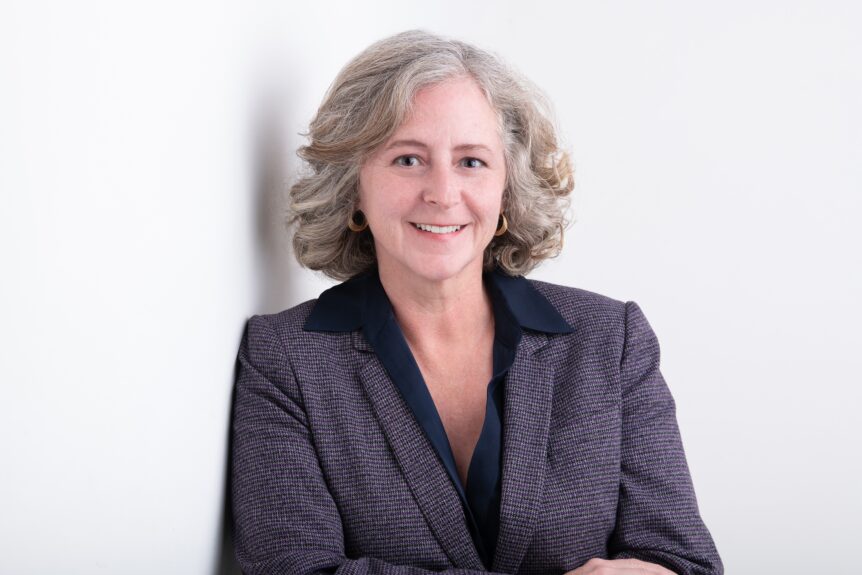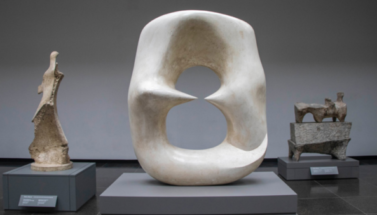Elizabeth C. Babcock Named Director of the Smithsonian American Women’s History Museum
Elizabeth C. Babcock has been named director of the Smithsonian American Women’s History Museum, effective June 3. Babcock is currently the president and CEO of Forever Balboa Park in San Diego and brings over 20 years of museum leadership experience to the role.
A cultural anthropologist and educator with experience in both the nonprofit and corporate sectors, Babcock has deep expertise in public engagement and education strategies, public-private partnerships and organizational development. As founding director of the Smithsonian American Women’s History Museum, Babcock will guide the new museum through a transformative period. Established by Congress in December 2020, the museum advances the understanding of women’s contributions and accomplishments throughout U.S. history. Babcock will set the vision for the museum and oversee the acquisition of a founding collection, curation of permanent and temporary exhibitions, and expansion of digital education resources beginning before the museum’s construction.
“Having served as a founding director, I know how this position requires clear vision, leadership and endless enthusiasm to bring history to life,” said Lonnie G. Bunch III, Secretary of the Smithsonian. “Dr. Babcock has all three and so much more. She will use her museum and management expertise to unlock American women’s stories for our nation in ways that we can learn from the past to be inspired for the future. I am excited for both Dr. Babcock and the Smithsonian.”
Babcock most recently served as the first president and CEO of Forever Balboa Park, a new organization building on the work of two prior park organizations that acts as the City of San Diego’s key non-profit partner stewarding Balboa Park. Located in San Diego, Balboa Park has 1,200 acres of public gardens, trails, open space and dozens of cultural institutions receiving over 14 million annual visits. During her tenure, Babcock stewarded major capital improvement projects, including the restoration of the park’s historic carousel, secured the organization’s first operating agreement with the city of San Diego, crafted a multi-year strategic plan and advanced a multi-million dollar campaign to restore the park’s iconic Botanical Building and Gardens.
Prior to leading Forever Balboa Park, Babcock served as the chief public engagement officer and Roberts-Wilson Dean of Education at the California Academy of Sciences. During her 12-year tenure, Babcock managed a wide portfolio, including the Steinhart Aquarium, Morrison Planetarium and Science Visualization Studio, and a portfolio of public-facing programs that reached over 20 million learners globally, secured multi-million-dollar grants, including a $10 million gift to endow a city-wide outreach program, and established innovative regional and national partnerships. Her leadership enabled the academy’s programs to serve 1.3 million visitors a year and reach an international digital learning audience of all ages.
Babcock also served as the vice president of education and library collections at the Field Museum of Natural History in Chicago from 2002 to 2010, and as an applied anthropologist in the museum, environmental and technological fields.
“I’ve been especially fortunate to dedicate my career to inspiring people of all ages and backgrounds to explore and learn more about our world,” Babcock said. “Cultural institutions play a critical role in discovering and sharing powerful stories about the human experience that can change our lives. I am thrilled to lead a museum that tells the spectacular stories of our nation’s women. I look forward to engaging with communities across our great country to identify and celebrate the diverse contributions women and girls have made and continue to make in the fabric of American society. It’s going to be an incredible journey.”
Babcock holds a Bachelor of Music in music education and Bachelor of Arts in psychology from Northwestern University and earned her master’s and doctoral degrees in anthropology from Indiana University.
Since the establishment of the Smithsonian American Women’s History Museum in 2020, the Smithsonian has named a 25-member advisory council and has identified two optimal sites for the museum to be located, which are currently pending congressional approval. In addition, the museum has raised more than $65.5 million dollars to date. Melanie Adams, director of the Smithsonian’s Anacostia Community Museum, has been serving as interim director. Adams will return to her position at the Anacostia Community Museum.
About the Smithsonian American Women’s History Museum
The Smithsonian American Women’s History Museum expands the story of America through the often-untold accounts and accomplishments of women—individually and collectively—to better understand our past and inspire our future. Through new scholarship, diverse viewpoints and innovative forms of exhibition, storytelling and participation, the museum inspires the next generation to create a more equitable world. The legislation creating the Smithsonian American Women’s History Museum passed Dec. 27, 2020, and the museum is working with Congress to finalize a site for a building. Connect with the museum at womenshistory.si.edu.
The museum’s inaugural digital exhibition, “Becoming Visible: Bringing American Women’s History Into Focus,” opened March 8 in celebration of Women’s History Month and International Women’s Day. It explores the remarkable lives of five American women whose stories have been forgotten or hidden. The interactive exhibition features collection items from around the Smithsonian; an introduction from actress, designer and producer Rosario Dawson, a member of the museum’s advisory council; and narrations from Smithsonian curators in a 10-minute online experience. “Becoming Visible” invites audiences into the museum’s work to expand the story of America by revealing how women’s histories have been recorded and remembered, lost and recovered.
About the Smithsonian Institution
Since its founding in 1846, the Smithsonian Institution has been committed to inspiring generations through knowledge and discovery. It is the world’s largest museum, education and research complex, consisting of 21 museums, the National Zoological Park, education centers, research facilities, cultural centers and libraries. Two of the 21 museums—the National Museum of the American Latino and the Smithsonian American Women’s History Museum—are in the early planning stages. There are more than 6,200 Smithsonian employees and 3,800 volunteers. The total number of objects, works of art and specimens at the Smithsonian is estimated at nearly 157 million, of which nearly 148 million are scientific specimens at the National Museum of Natural History. www.si.edu



